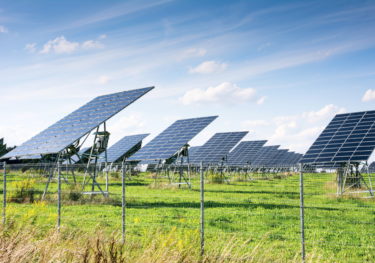Blog | 16 Apr 2024
How Canada’s wildfires could affect American house prices

Sarah Nelson
Senior Economist, Economics & Sustainability

Flames tore through Canada’s forests in 2023, burning an area twice the size of Portugal between early Spring and late Autumn.
The Canadian wildfires had devastating human and environmental impacts, and caused a major shock in the North American lumber market. Quebec, Alberta, and British Colombia, which account for almost 30% of North America’s lumber production, were all hit severely.
As a result, the price of lumber rose by more than a third between May and June in Canada. And the effect was not limited to the domestic market—costs of lumber in the larger US market rose 4% by some estimates.
The Northern Hemisphere is now heading into the 2024 fire season, having just had its hottest winter on record. If it is anything like last year, we can expect to see further impacts on people, nature, and global markets.

Climate risks affect companies’ supply chains
The 2023 disruptions in the North American lumber market flowed through supply chains to construction, paper production, and even the mortgage industry. Canadian construction costs were 7.5% higher in June 2023 than in the previous year, and up in the US as well. Higher construction prices mean fewer (or more expensive) new homes. Canada’s wildfires could therefore contribute to a shortage of affordable housing thousands of miles away in communities across the US.
The Canadian wildfires were a cautionary tale for climate-related supply chain disruptions. Studies suggest that 2023’s record-breaking fires were made twice as likely, and 50% more intense, due to climate change.
We can expect to see more frequent disasters of the same scale and ferocity as Canada’s wildfires as global temperatures continue to rise. These events will create cascading disruptions through companies’ supply chains that will materially affect their bottom line.
Scope 3 is the next wave of corporate climate action
Against the backdrop of increasing supply chain uncertainty, efforts to evaluate the climate impacts and risks in companies’ value chains, commonly known as Scope 3 exposures, are growing. Momentum is building across three fronts. First, regulation has been expanded to require Scope 3 reporting in the EU, the UK, and Singapore include Scope 3 reporting. Several other countries are considering Scope 3 regulations.
Second, pressure from investors to report on Scope 3 risks is also intensifying. They are increasingly aware that climate-related exposure, including in the supply chain, could affect the value of their investments. Some are pushing for more comprehensive reporting as a requirement for continued capital.
Finally, companies themselves are increasingly aware of the need to understand their upstream supply chains and the climate-related risks imbedded within them. Supply chain snarl-ups, like those observed during Covid-19 and more recently with the outbreak of war in the Ukraine and attacks on vessels in the Red Sea, highlight the vulnerability of global production at a time when weather-related disasters are hitting headlines with increasing frequency. CEOs and CFOs are taking notice and ramping up efforts to build climate resilience into their business strategies.

Finalised SEC climate disclosure rules omit supply chain reporting
The United States Securities and Exchange Commission recently released new rules requiring public companies to disclose climate-related risks. The rules, which were temporarily halted by the Fifth US Circuit Court of Appeals in March, aim to standardise how companies report on their greenhouse gas emissions, weather-related risks, and low-carbon transition plans.
The SEC’s final rules are a major step forward for the US financial sector but are relatively weak compared to requirements in other jurisdictions and earlier drafts of the SEC’s own rules.
Most notably, previous releases had included requirements to report on Scope 3 emissions and risks. Their removal in the current regulation goes against the direction of travel for corporate climate risk assessments.

Risk-savvy companies will assess supply chain impacts anyway
The Canadian example shows a relatively direct connection: fires in Canada affected construction-related industries in neighbouring markets. However, future disruptions might not be as easy to foresee.
Consider rapeseed oil. It is commonly used in lubricants for machinery, establishing it as a key component in manufacturing supply chains. Rapeseed crops are concentrated in Europe, and susceptible to drought—a drought like the one seen in Europe in 2023 could easily affect rapeseed yields and prices.
Falling rapeseed yields will therefore affect markets for lubricants and machinery, eventually flowing through to manufacturers far distant from the bright yellow rapeseed fields. Not immediately obvious, but the rapeseed market could therefore create disruption in, for example, European car markets, or jet engine manufacturing.
Supply chain risks can be difficult to unpack when they occur far up the supply chain. Understanding them can be time-consuming, and indeed the SEC’s rollback reflects urging from lobbyists who argue that Scope 3 reporting is overly burdensome.
This is shortsighted. These upstream risks can be highly material to companies’ activities, its bottom line, and the capital that investors have entrusted to them—surely this is worthy of business leaders’, and their board members’, attention.
Building capabilities to assess impacts and risks throughout the supply chain takes time. Risk-savvy CEOs will be acting today to address their climate risks tomorrow.
Author

Sarah Nelson
Senior Economist, Economics & Sustainability
+44 (0)203 910 8000

Sarah Nelson
Senior Economist, Economics & Sustainability
London, United Kingdom
Sarah is a Senior Economist in the Economics & Sustainability team at Oxford Economics. She works with clients to understand their environmental impacts and dependencies, and helps them achieve their sustainability goals. She has professional and research experience in the economics of decarbonisation, energy policy and environmental and economic impact assessments.
Prior to joining Oxford Economics, Sarah worked in economic consulting in Sydney and London, where she worked on energy regulation, anti-trust, carbon forecasting and social welfare assessments. She holds Bachelor’ degree in economics and physics from the University of Auckland, and a Masters in Economics from the University of California, Santa Barbara, where she was a Fulbright Scholar. Sarah completed a PhD in climate economics and policy from the University of Cambridge in 2021.
Tags:
You may be interested in

Post
Promising trends signal optimism for the hotel sector
The global travel recovery took great strides in 2023, with some destinations already reporting a full recovery back to pre-pandemic levels. Trends continue to suggest further growth in tourism activity going into this year, signalling optimism for the hospitality sector going forward. But risks stemming from inflation, geopolitical tensions and climate change will persist.
Find Out More
Post
Beyond assumptions – the dynamics of climate migration
Millions of people have already been displaced because of environmental shocks, but many aspects of climate migration remain poorly understood. This confusion has led to oversimplified assumptions about its causes and effects – in reality, it’s more complicated and has many nuances.
Find Out More
Post
The costs and eventual benefits of smooth decarbonisation in ASEAN
Reaching net zero carbon emissions by 2050 would likely have a larger impact on economic activity initially in ASEAN5 countries than more gradual decarbonisation. But our modelling suggests the gap would narrow in later years and turn positive in most places approaching 2050.
Find Out More